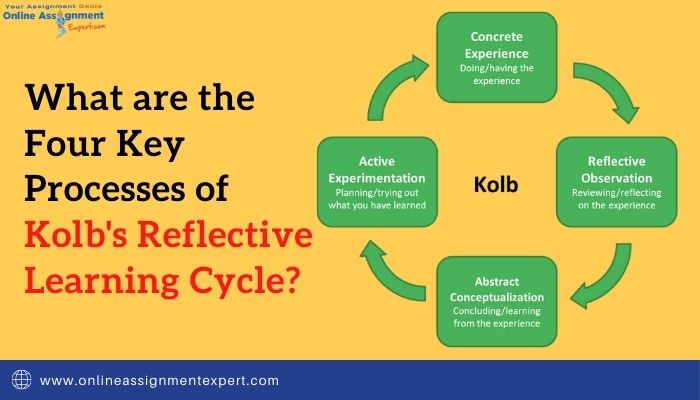
January 11, 2021
A Simple Guide to Nanotechnology or Nanoscience
No 1 Assignment Help
is only a click away.
In academic, nanotechnology and nano-science is said to be an application and study of very tiny things. Moreover, it is being used in different fields of science, such as biology, chemistry, physics, materials science, and engineering as well. So, if you are a science or engineering student then you must know about the nanotechnology or Nanoscience.
How Nanotechnology was introduced?
The concepts and ideas behind nanotechnology and nano-science begin with a talk entitled “There is Plenty of Room at the Bottom” at the American Physical Society meeting which was held at California Institute of Technology by physicist Richard Feynman on 29th December 1959. In this talk, Richard said that it is a process where scientists can control, operate, and influence individual molecules and atoms. After a decade, Professor Norio Taniguchi created the term “nanotechnology” in one of his explorations of ultra-precision machining.
Basic Concepts of Nanotechnology and Nano-science by Our Experts
It is very difficult to imagine the size of nanotechnology. However, 1-nanometer is equal to the billionth of a meter, or 10-9 of a meter. Let’s have a look at the examples:
- Over 25,400,000 nanometres are there in an inch
- A newspaper sheet has nearly 100,000 nanometres thick
- In case, if a marble is to be a nanometre, then 1 meter would be equal to the size of the Earth
Nanotechnology and Nanoscience are involved with the capacity to understand and control the individual molecules and atoms. You will be interested to know that everything available on Earth is made up of atom. Seeing the atom with the naked eye is impossible in some cases. It also becomes impossible to see them with the help of microscopes which are generally used in high school science classrooms. All you need is the microscopes that were invented in the 1980s like STM.
Once you have the Atomic Force Microscope (AFM) and the Scanning Tunnelling Microscope (STM), the nanotechnology age was introduced. Nowadays, engineers and scientists are finding numerous ways to purposely make nanoscale materials in order to take advantage of their improved properties, like lighter weight, higher strength, and better control of the light spectrum.
Reasons why Nanoscience or Nanotechnology is important
Nanotechnology or nanoscience enhances the prevailing industrial applications, materials, and processes by scaling them down towards the nanoscale, so that to in the end exploit the surface phenomena and unique quantum. This trend is being mainly driven by the organisation's ongoing quest to enhance current products by developing different components and better performance materials.
The best example of an industry which has been using nanoscale manufacturing technologies are used on a large scale is the semiconductor industry. Your smart watch, smartphone, or tablet contains the billions of transistors on a computer chip just on the size of your fingernail.
Types of Nanotechnology Discussed by our Assignment Help Experts
Nanotechnology is comprised of different types of nanotechnology. Our experts providing assignment help in Australia have classified and discussed these types. Let’s begin!
- Descending (top-down)
Structures and mechanisms are miniaturised at the nanometric scale. It ranges from 1 to 100 nanometres in size. It is quite frequent to date, mainly in electronics.
- Ascending (bottom-up)
Here, you begin with a nanometric structure. For instance: A molecule and through self-assembly and mounting process, you develop a larger mechanism than you have begun with.
- Dry nanotechnology
Dry nanotechnology is used to manufacture structures in silicon, coal, metals, inorganic materials, and semiconductors which generally do not work with humidity.
- Wet nanotechnology
Wet nanotechnology depends on the biological systems presented in an aqueous environment, including membranes, genetic material, cellular components, and enzymes.
Applications and Examples of Nanotechnology
Nanomaterial or nanotechnology is applied in almost every sector. However, few areas of nanotechnology are discussed below by our experts who are known to deliver affordable assignment help.
- Electronics
- Energy
- Biomedicine
- Environment
- Food
- Textile
There are both dark and bright sides of nanotechnology in the coming future. On the other hand, this field is likely to grow globally, increased government support, driven by technological advances, great demand for smaller devices, and increase private investment are some of them.
However, the health, safety, and environmental concerns and risks of nanotechnology concerned to its commercialization might affect market expansion. Countries like Brazil, the United States, and Germany can lead the nanotechnology industry by the year 2024. Not only this, but nanotechnology industry will also make its presence in the Top 15 Asian countries such as China, Japan, India, South Korea, Malaysia, and Taiwan.
However, if you are a science or engineering student then most probably you will be required to deal with nanotechnology-based units and its assignments. Assignments can be in the form of an essay, case study, dissertation, etc. Dealing these assignments might create a lot of trouble and issues and you might need assignment help in Australia. The best platform to avail help in your nanotechnology or nanoscience assignment is www.onlineassignment-expert.com.
Online Assignment Expert is a firm offering reasonable assignment help to university scholars who face issues in their assignment. Taking help from us ensure you for the following things –
- Cover multiple subjects – we are into assignment help for various subjects such as management, statistics, economics, mathematics, etc.
- Downloading samples – with us, you are free to download assignment samples for nanoscience or nanotechnology. These samples can be downloaded free of cost.
- Get free editing – in case, if you find errors in your assignment, we are here to make editing and assist you in submitting an errorless assignment solution.
- Helps in a variety of assignments – here, we cover almost every type of assignment that is being offered by the Australian universities. Some of them are dissertation, essays, case studies, bibliography, online quizzes, and more.
Additionally, there are several other benefits such as complete confidentiality, original content, instant assignment help, live customer support, etc. Hence, don’t worry and hire our experts.
Related Blogs
Subscribe Our Newsletter & get Information about latest courses









